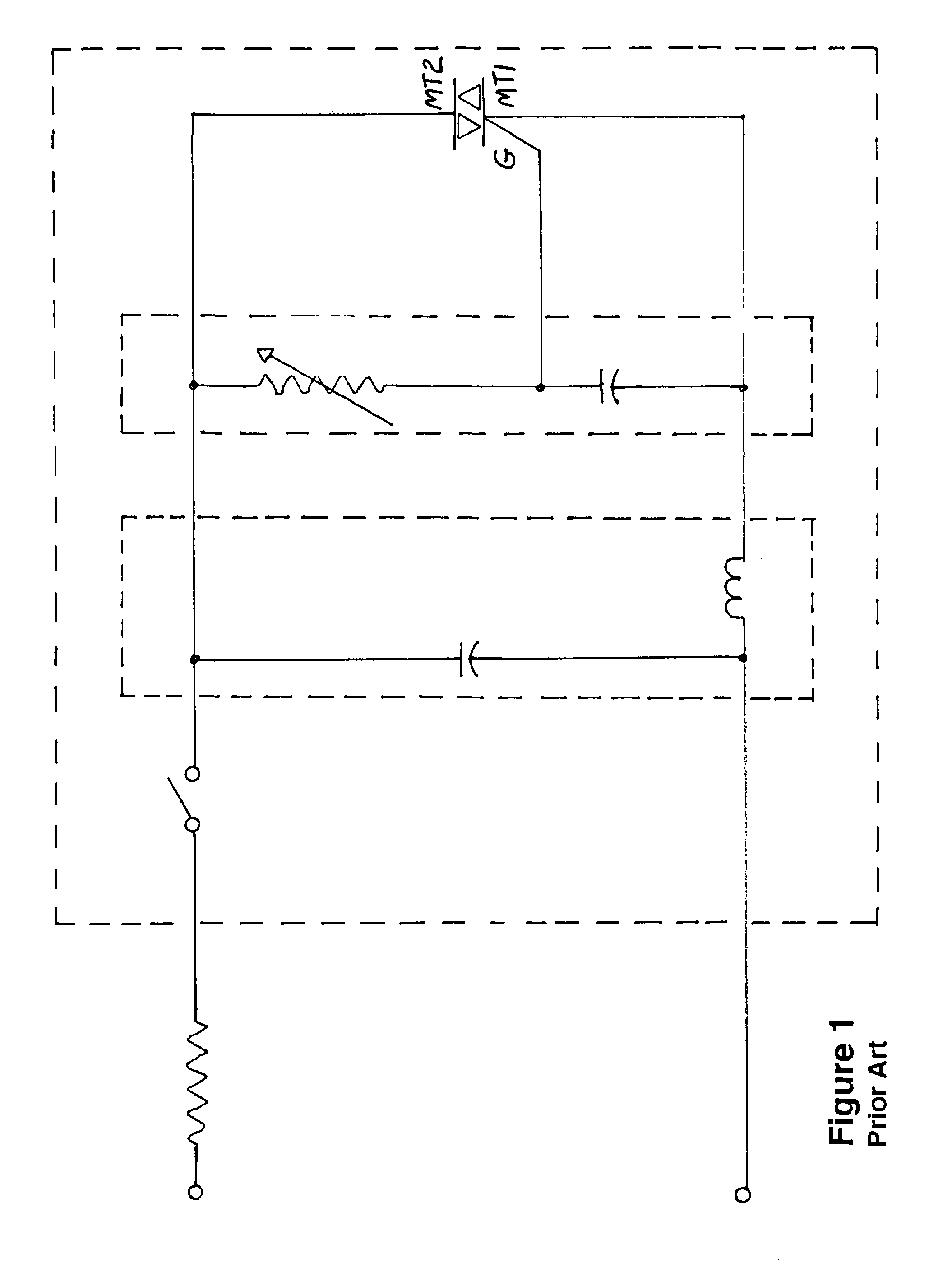Triac-based, low voltage AC dimmer
- Summary
- Abstract
- Description
- Claims
- Application Information
AI Technical Summary
Benefits of technology
Problems solved by technology
Method used
Image
Examples
Embodiment Construction
[0011]FIG. 2 shows a triac-based, low-voltage AC dimmer circuit 14 constructed in accordance with the present invention. Dimmer circuit 14 is configured in series with an incandescent lighting load 15 as a complete controller and load circuit. An external source of low-voltage AC, typically provided at the secondary winding of a standard step-down transformer, is applied to the circuit across input terminals 16 and 17. All component values stated hereinafter are nominal and approximate.
[0012]A triac 18 may comprise any commercially available triac device. Triggering for the on or conductive state is achieved by applying a threshold voltage of either polarity across gate G and the MT1 power terminal, as low-voltage is concurrently applied across the MT1 and MT2 power terminals. Once triggered, current flows through the MT1 and MT2 power terminals to energize incandescent load 15. Triac 18 reverts to its off or blocking state whenever the voltage across the MT1 and MT2 power terminals...
PUM
 Login to View More
Login to View More Abstract
Description
Claims
Application Information
 Login to View More
Login to View More - R&D
- Intellectual Property
- Life Sciences
- Materials
- Tech Scout
- Unparalleled Data Quality
- Higher Quality Content
- 60% Fewer Hallucinations
Browse by: Latest US Patents, China's latest patents, Technical Efficacy Thesaurus, Application Domain, Technology Topic, Popular Technical Reports.
© 2025 PatSnap. All rights reserved.Legal|Privacy policy|Modern Slavery Act Transparency Statement|Sitemap|About US| Contact US: help@patsnap.com



